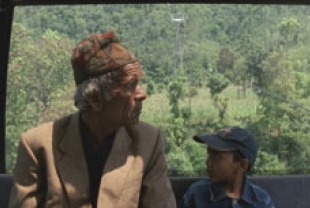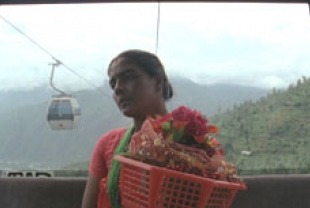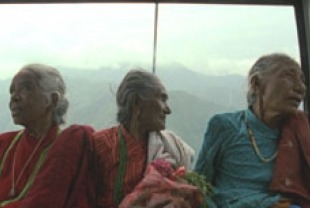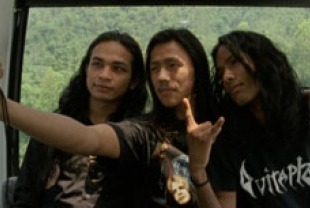Manakamana is an experimental documentary by Stephanie Spray and Pacho Velez of Harvard's Sensory Ethnography Lab. It follows in the spirit of Leviathan about a fishing trawler and Sweetgrass about sheep ranchers in the western U.S. Here a static camera takes in the confines and the passengers in a cable car which travels up the Nepal Valley taking people over the mountainside to where the Manakamana Temple is located. Once the cable car reaches its destination, it heads back down in the other direction with a new set of travelers.
Each trip takes about nine minutes and there is no dialogue until about 20 minutes into the documentary when three elderly women talk about the temple, their religion, and the fact that years ago it would have taken three days to walk the route of the cable car. When three young men wearing Hard Rock Cafe t-shirts capture our attention, we note the differences between them and the elderly women. Just like their generational cohort all over the world, they are obsessed with taking pictures of themselves with their iPhones. They are definitely having more fun than the nervous and frightened goats making the journey without an owner.
The spiritual nature of Manakamana is revealed when our monkey mind impatiently asks us "why waste time watching the same cable trip over and over again?" Although the camera faces the same direction and the vegetation below is the same, each segment is different from the others.
But we have been trained to speed through our days and to think of repetition as a form of boredom. Manakamana encourages us to slow down and pay attention. It also shows us how incredibly rich and varied the sameness in our lives can really be if we are truly present.
Screened at The 51st New York Film Festival, Lincon Center.



